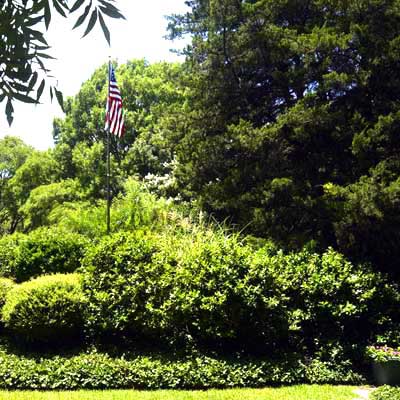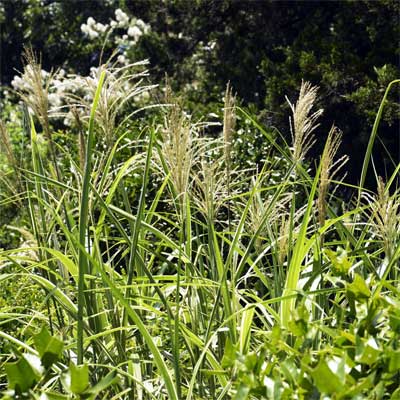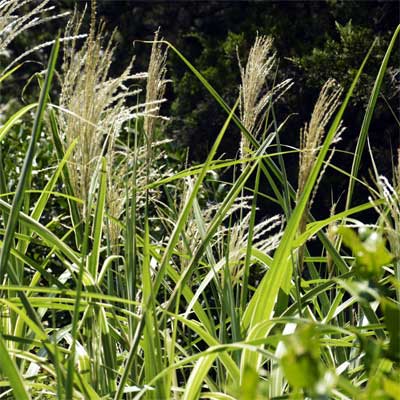From the Sperry Gardens – July, 2012

My dad was a range ecologist with Texas A&M. I grew up with a hearty respect for grasses. However, where he was mainly interested in grasses that sheep and goats would graze, my interests turned to those that looked great in the garden.
I wondered, for the first 20 years of my career in the horticultural media, why ornamental grasses weren’t at all popular. Oh, we’d had pampasgrass, but where were all the other types that were quite common up north?
Gradually, grasses came into our marketplace. Suddenly, 10 or 12 years ago, grasses started showing up everywhere. Places where we’d been using shrubs and groundcover were now covered with grasses. Entire beds were being filled with fountain grasses, muhly grasses and more — to a point of great excess, at least to this gardener’s eye.

However, I still have my own ornamental grasses. I just plant them in individual clumps. If you look really closely, just behind my beloved Dazzler hollies (berries as large as marbles), you’ll see one of my favorites, Miscanthus sinensis var. Condensatus ‘Cabaret’, poking up its flowers. (Photos taken Tuesday)
I like Cabaret! It’s a bolder, bigger, more colorful selection of the regular maidengrass. However, unlike issues I’ve had with its sibling, this one doesn’t seem to produce scores of weedy seedlings all through my gardens.

Cabaret grows to 5 to 7 feet tall and 3 to 4 feet wide. Its leaves are a full inch wide, and they’re boldly striped green and white. The flowers/seedheads are honey-tan with pink shades, and they’ll be with the plants for the rest of the season.
Like other selections of Miscanthus, Cabaret dies to the ground with the first freeze. While some like to leave the browned leaves and seedheads in place over the winter, I prefer to tidy things up by cutting the tops back to within 6 or 10 inches of the ground. New growth emerges in early March, and the cycle begins anew.
Cabaret is just one of many types of Miscanthus you’ll find online and in nurseries. It can be dug and divided anytime from late fall into very early spring. In fact, I believe that I’ll probably dig and relocate this clump. I’m really not getting the full show where it is now, and it’s such a cooling plant in the summer, I want to be able to see it.

